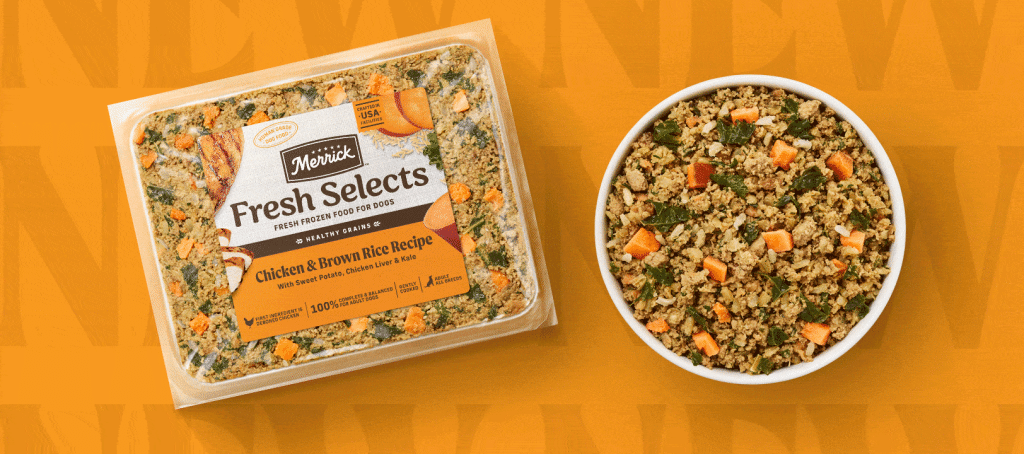How to Read Pet Food Labels: What to Look For

Being a responsible pet owner means prioritizing your furry friend’s health and well-being, and understanding pet food labels is a key part of that journey. With a multitude of brands and products on the market, it is essential to hone your skills in reading these labels. Knowledge can empower you to make choices that will enhance your pet’s quality of life, ensuring they receive the balanced nutrition they deserve.
Key Components to Examine
When scrutinizing pet food labels, there are several essential components you should pay close attention to:
- Ingredient List: The ingredient list reveals what is included in your pet’s food. Ingredients are listed in descending order by weight, meaning the first few ingredients are the most significant. Look for high-quality protein sources such as real meat (like chicken, beef, or fish) as the primary ingredients. Avoid foods that list unnamed meat products or meat by-products as the first ingredient, as they can be lower in quality.
- Nutritional Adequacy Statement: This statement is typically found on the back or side of the package and serves as a reassurance that the food adheres to the standards set by the Association of American Feed Control Officials (AAFCO). Look for wording indicating that the food is formulated for your pet’s life stage, whether it is tailored for puppies, adult dogs, or senior pets. It’s crucial, as pets have different nutritional needs at various life stages.
- Guaranteed Analysis: This section provides quantitative information about essential nutrients. Check for levels of crude protein, fat, fiber, and moisture to assess if the food meets your pet’s dietary needs. For example, a high-protein food is generally beneficial for active dogs, while senior dogs might do better with moderate protein and lower fat levels.
Understanding Label Claims
Pet food labels often contain alluring claims that can sometimes be misleading. Familiarizing yourself with these terms can help you discern the actual value of the product:
- “Natural”: This term suggests that the ingredients are sourced from nature without synthetic additives. However, it’s crucial to examine the ingredient list to ensure the food is truly beneficial for your pet and not just adopting catchy marketing language.
- “Grain-Free”: Grain-free diets cater to pets with allergies or sensitivities. However, there is a controversial debate regarding the necessity of grain-free diets for all pets. Some experts argue that grains can be a healthy part of a balanced diet for many dogs and cats, providing essential fibers and nutrients.
- “Holistic”: Although consumers often perceive this term as synonymous with quality, “holistic” is primarily a marketing notion without strict regulatory definitions in pet food formulation. Always prioritize verified ingredients and nutritional content over trendy terms.
By diving deep into the specifics of pet food labels, you not only make informed choices but also champion your pet’s health. Understanding these components allows you to navigate the often overwhelming sea of pet food options effectively. With each informed choice, you are investing in a healthier, happier future for your beloved companion. Eager to learn more? Let’s continue exploring the fascinating world of pet nutrition together and uncover the secrets that lie within those labels!
DON’T MISS OUT: Click here to discover the essential nutrients your pets need

Decoding the Ingredient List
The ingredient list is your first stop when examining pet food labels, and it plays a crucial role in understanding the quality of your pet’s diet. Ingredients are listed in order of weight, which means that the first few items usually represent the bulk of what’s in the food. When surveying this list, prioritize products where the first ingredient is a named, high-quality protein source, such as real meat (like chicken, beef, or fish). Ingredients such as “meat meal” or “meat by-products” are often less desirable and can raise questions about what exactly is being included in your pet’s diet.
Additionally, it’s important to be aware of any fillers or artificial additives. Ingredients like corn, soy, or wheat are frequently used as filler materials in lower-quality pet foods. While these aren’t necessarily harmful in moderation, they generally offer less nutritional value than whole food ingredients. Reading the ingredient list thoroughly allows you to better understand and choose high-quality options for your pet.
Identifying Nutritional Information
Another vital section of the label is the nutritional adequacy statement, usually situated on the back or side of the package. This statement indicates whether the food meets the standards set by the Association of American Feed Control Officials (AAFCO). AAFCO provides guidelines that establish the nutritional requirements for pet foods across various life stages. It is essential to choose a food that explicitly states it is formulated for your pet’s specific life stage, whether that be for puppies, adult dogs, or senior pets.
Beyond AAFCO standards, the guaranteed analysis segment of the label provides quantitative details on the nutrient composition of the food. This analysis typically outlines the levels of crude protein, fat, fiber, and moisture. For instance, an active dog may benefit from a higher protein content to support their energy needs, whereas older dogs could require a balanced mix that is lower in fat yet maintains protein levels to support muscle mass.
Navigating Marketing Terms
Understanding marketing terms can also significantly enhance your ability to decipher pet food labels. Phrases like “natural” and “holistic” can be enticing but often lack specific regulatory definitions. “Natural” can imply that ingredients originate from real sources, but it’s essential to verify the ingredient list for clarity on the quality of those components. Similarly, “holistic” is largely a marketing term and does not guarantee superior ingredients or nutrition.
Another frequently encountered term is “grain-free.” While these diets are often marketed to pets with certain sensitivities, there is an ongoing debate about whether the elimination of grains is necessary for all pets. Many experts assert that some grains, such as brown rice or barley, can provide essential nutrients and should not automatically be excluded from their diet.
By being proactive in understanding these components of pet food labels, you are positioning yourself as an informed pet owner. Each label decoded is a step towards ensuring the health and happiness of your furry friend. So, as you continue this exploration of pet nutrition, remember that knowledge is not just power—it’s a pathway to a better life for your beloved companion.
Decoding Pet Food Labels: Essential Information to Consider
When it comes to choosing the right food for your beloved furry friends, understanding the ingredients listed on pet food labels is crucial. Pet owners must look beyond catchy marketing slogans to ensure their animals receive a balanced diet that meets their specific needs. Here’s an insightful look at the critical elements to watch for, enhancing your knowledge in selecting quality pet food.Ingredient List: This is where you’ll find the components of the pet food. The ingredients are listed in descending order by weight, meaning the first few items are what the food contains most of. Look for a protein source—such as chicken, lamb, or fish—as the first ingredient. Avoid foods that list fillers, artificial preservatives, or vague terms like “meat by-products” and “grain by-products.”Guaranteed Analysis: This section provides information about the food’s nutritional content. It includes percentages of crude protein, crude fat, crude fiber, and moisture. Ensure that the protein content is adequate for your pet’s age, breed, and activity level. For example, active dogs may require higher protein levels compared to sedentary ones.AAFCO Statement: Look for a statement from the Association of American Feed Control Officials (AAFCO). This signifies that the food meets established nutrient profiles for pets. Such claims bolster confidence when claiming the food is “complete and balanced” for your pet’s specific stage of life (like puppy or adult).Feeding Guidelines: These recommendations can help prevent overfeeding or underfeeding your pet. Always adjust portion sizes based on your pet’s individual needs, taking into account factors like their weight, age, and activity level.Expiration Date: Be sure to check the expiration date on the packaging. Feeding your pet stale food can lead to digestive issues and diminished nutritional value.Next time you shop for pet food, keep these guidelines in mind. Educating yourself can result in making informed choices that benefit your pet’s health and well-being. To further enhance your knowledge, check out labels and compare different food brands; each has unique compositions that may affect your pet’s health in varied ways.
DON’T MISS OUT: Click here for essential tips
Deciphering Nutritional Claims and Additives
In addition to examining the ingredient list and nutritional information, understanding the nutritional claims made on pet food labels can provide deeper insights into the quality of what you are purchasing. Terms like “complete and balanced” suggest that the food contains the necessary nutrients for your pet’s health. However, it’s worth noting that these claims often rely on the food meeting AAFCO standards, so checking for AAFCO certification is paramount.
Be cautious of labels that utilize phrases like “premium,” “super premium,” or “ultra premium.” While these terms often hint at superior quality, they can be largely subjective and lack legal definition. Instead of relying solely on these terms, always delve deeper into the ingredient list and nutritional analysis to validate quality.
Also, keep an eye out for added vitamins and minerals. Certain essential nutrients, like omega fatty acids, are vital for a pet’s skin and coat health, while probiotics can aid digestion. Products fortified with these nutrients may provide additional health benefits. However, not every additive is beneficial; additives like artificial colors and flavors should generally be avoided as they offer no nutritional value and could potentially trigger allergic reactions in sensitive pets.
Understanding By-Products and Meals
Another vital component to consider when reading pet food labels is the presence of by-products and meals. While the term “meat meal” may initially sound unappealing, it can actually provide concentrated protein and nutritional value. Meat meals are made by rendering, which removes moisture and fat, resulting in a potent protein source. However, the source should always be clear; for example, “chicken meal” is better than a vague term like “meat meal,” as the latter could come from unknown sources.
On the other hand, by-products can sometimes include lower-quality materials. These can encompass non-meat elements, like organs, that are beneficial, but many consumers prefer clarity around what their pet is consuming. Aim for foods that keep ingredient transparency, specifying what types of by-products are included, to assure you are choosing quality nutrition.
Keeping Up with Recalls and Safety Standards
Even after deciphering ingredient quality and nutritional claims, staying informed about pet food recalls is equally vital in making safe choices for your pet’s diet. Regulatory agencies such as the Food and Drug Administration (FDA) and the U.S. Department of Agriculture (USDA) keep updated lists of products that may be unsafe due to contamination or mislabeling. Regularly checking these resources can help you avoid potential health risks for your furry friend.
Moreover, online platforms and pet food review sites may provide additional insights into product reliability and quality. Engaging with pet owner communities can also yield recommendations or warnings that may not be readily available on the label.
As you navigate the complexities of pet food labels, each decision you make enriches your pet’s diet, supporting their health and well-being. The more informed you become, the better equipped you are to make choices that will ultimately benefit their overall quality of life.
DISCOVER MORE: Click here to learn about the importance of socialization in puppy training
Conclusion
Understanding how to read pet food labels is not merely a task; it is an essential skill that empowers pet owners to make informed choices for their furry companions. By closely analyzing the ingredient list, nutritional claims, and the presence of potential additives, you are better equipped to select high-quality nutrition that supports your pet’s health and vitality. Recognizing the difference between beneficial components such as omega fatty acids and unnecessary fillers or additives will help you avoid potential health risks and allergic reactions.
Moreover, being aware of terms like by-products and meat meals allows for a more nuanced understanding of what you are feeding your pet, ensuring that you choose products that align with your expectations regarding source transparency and nutritional content. Regularly consulting resources on pet food recalls and safety standards, as provided by agencies like the FDA and USDA, further enhances your decision-making process, allowing you to safeguard your pet’s well-being.
In conclusion, as you cultivate your knowledge of how to read pet food labels, you not only enhance your pet’s diet but also foster a healthier, more joyful life for them. Every label offers a new opportunity for discovery. Take the time to investigate further, because an informed decision today can lead to a happier and healthier tomorrow for your beloved pet.


